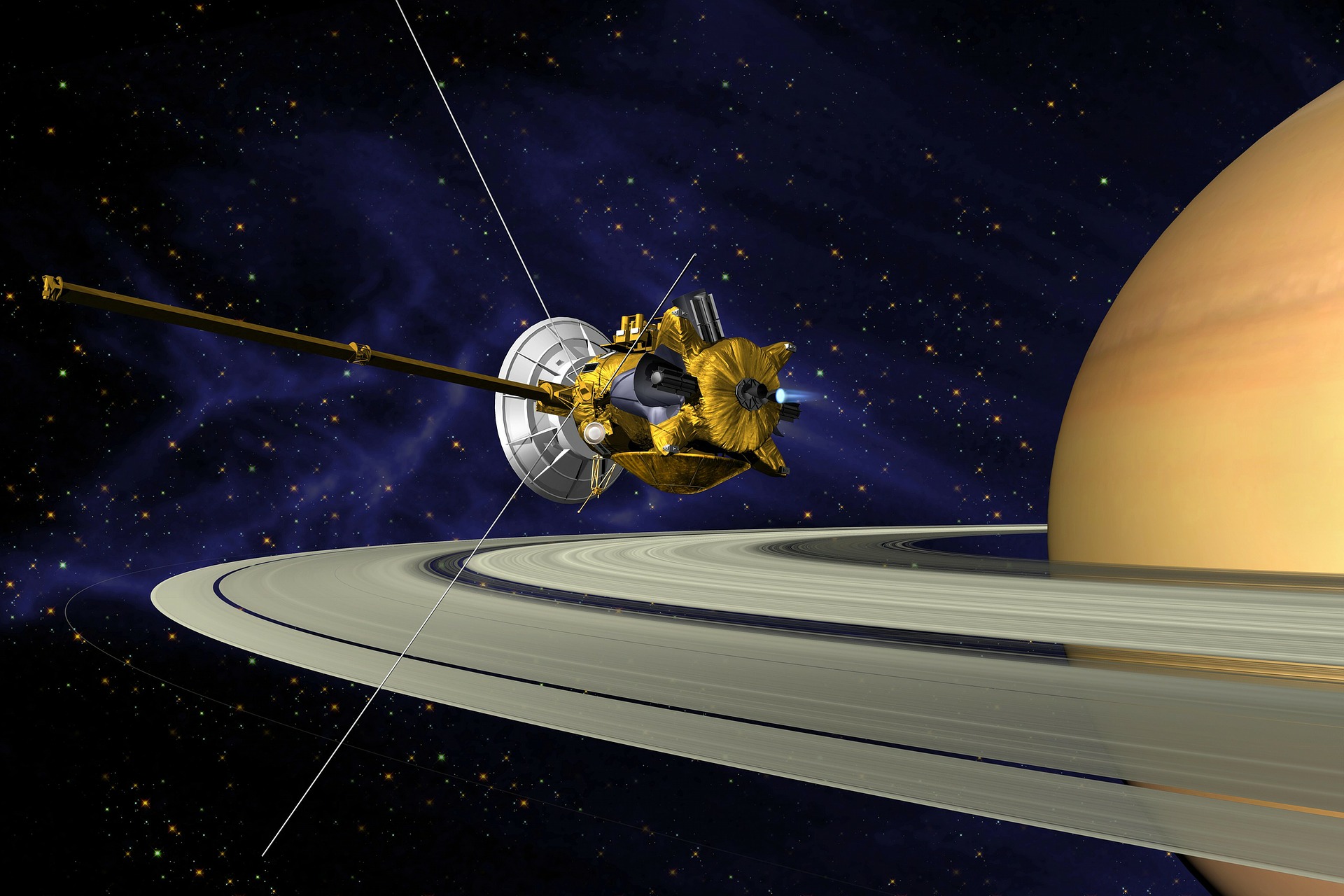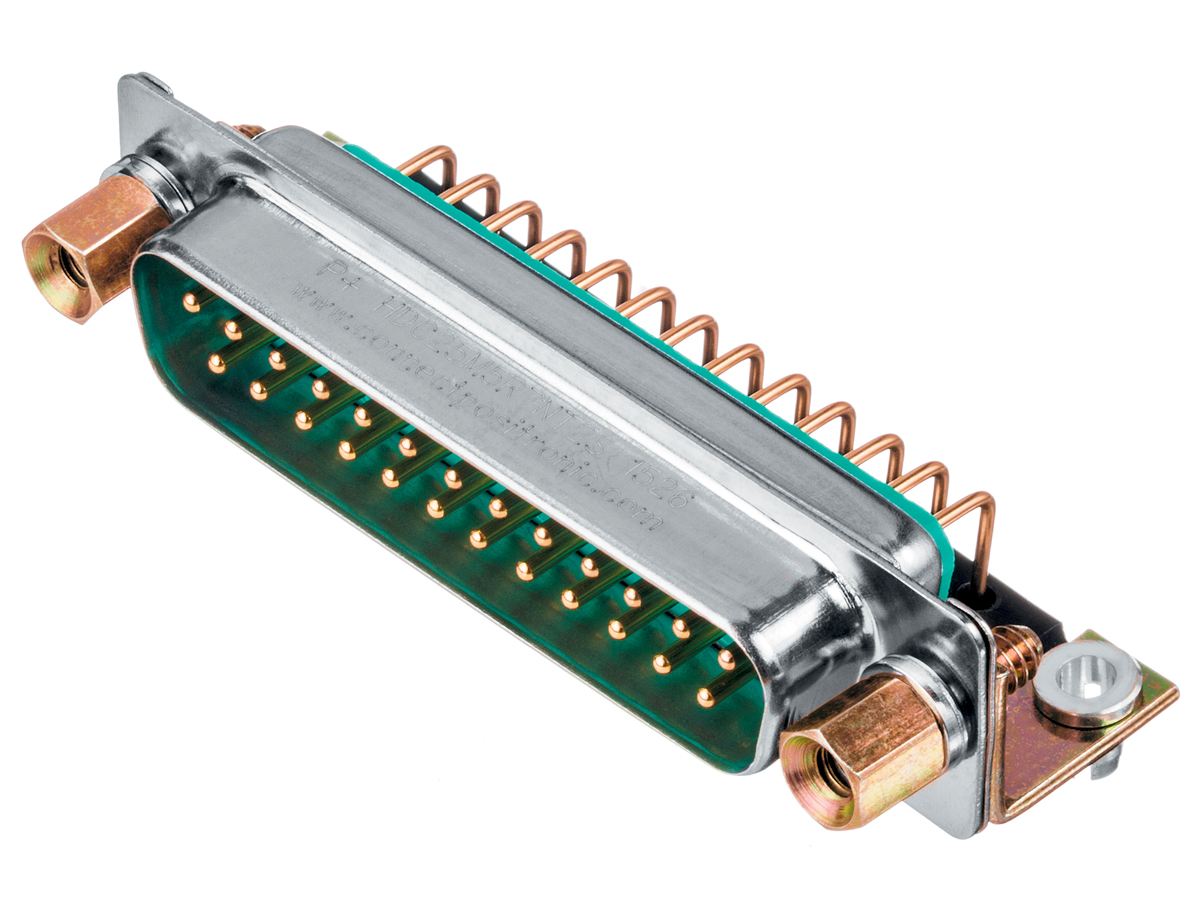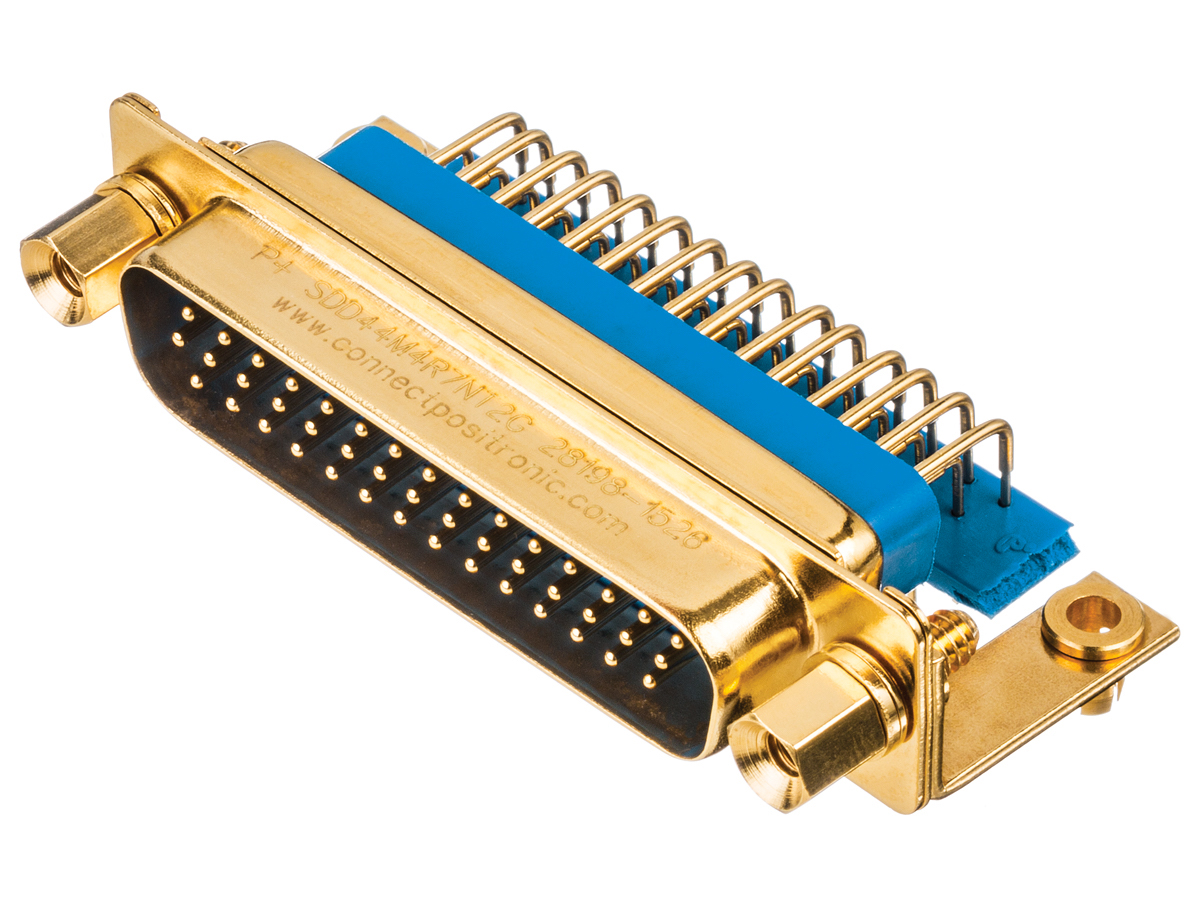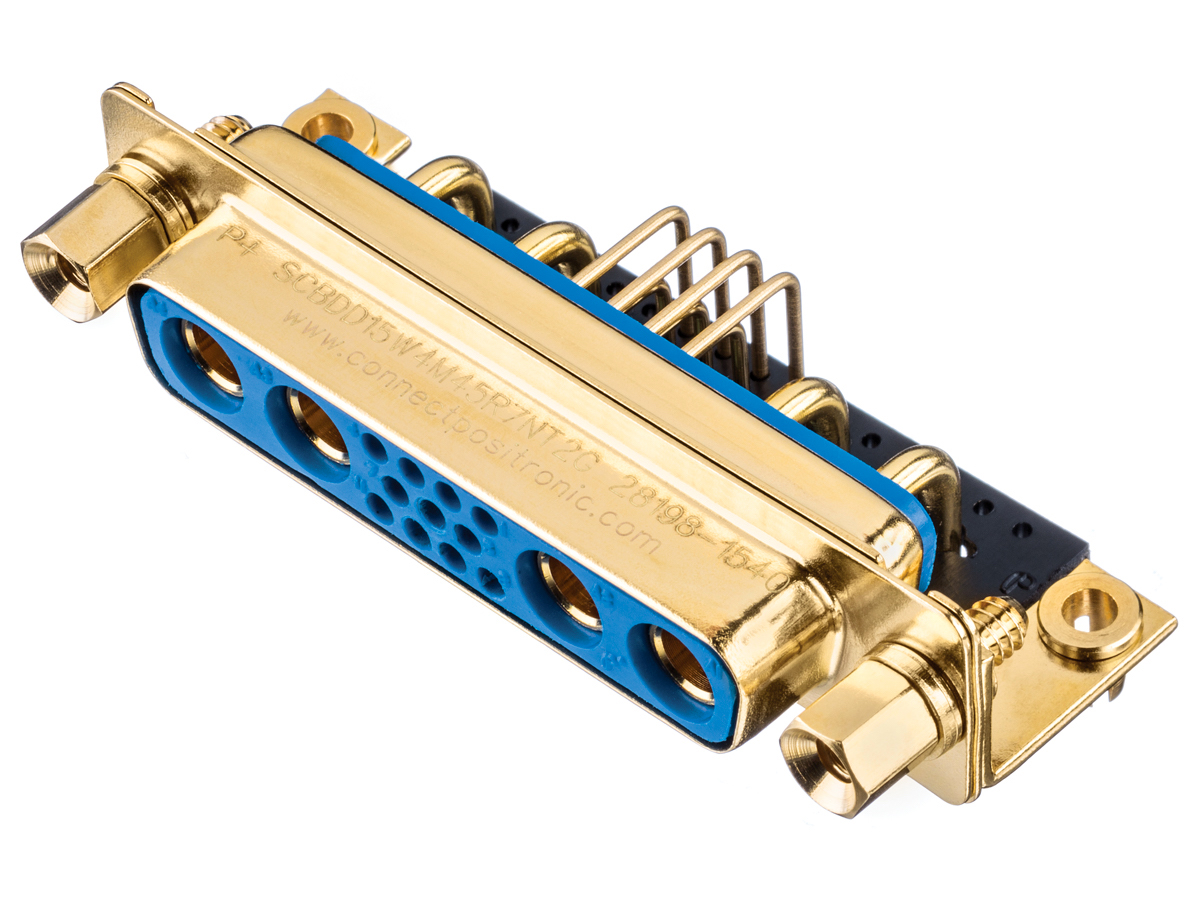The Rigor of Mil/Aero Specifications
Mil/Aero specifications strictly govern the design and development of aeronautical and defense electronics down to component-level materials and processes. In many cases, military and aerospace standards are very similar. But connector requirements for military and space flight applications do have some notable differences.

Spacecraft and probes like NASA’s Cassini spacecraft, which carried the European Huygens probe, the first human-made object to ever land on a planet in our distant outer solar system, require the highest-reliability components. Mil/Aero specifications ensure that each component designed into such mission-critical systems is rigorously tested and proven to perform in even the most extreme conditions.
Picture yourself in the following situations: mil/aero specifications
- Your F-16 is loaded with armaments, tracking the movement of a terrorist caravan on a dusty, Middle Eastern desert road. The security of an entire province depends on the success of your mission.
- Your aircraft carrier is weaving through the same waters you’ve been traversing for the last six months, establishing a safe haven and platform for military response in a troubled region.
- The space probe you’re tracking is nearing Saturn, 746 million miles away, where the dreams of a 13-year-long project will soon be fulfilled — if all of the systems continue to perform to spec and survive both the rigorous flyby and brutally cold -185°C environment.
What do these three scenarios have in common? They are environments in which failure is not an option, where fail-safe performance is the minimum requirement. For this reason, the suppliers of components used to build and operate military and space instruments are held to the highest standards and specifications in the world.
Military and aerospace standards are commonly known as mil-spec or mil/aero specifications and together they comprise the gauntlet faced by electrical connector manufacturers who dare to venture into this world of extreme benchmarks.
The Gauntlet of Military and Aerospace Standards
The military and aerospace markets encompass a wide variety of different applications, including radar, cameras, vehicular electronics, avionics, embedded systems, unmanned aerial vehicles (UAVs), and many others. Connectivity is at the core of all of the applications within these markets, ensuring peak performance and the reliable transmission of power, signal, data, and other media. As such, these applications require high-performance and high-reliability components built to exacting military and aerospace standards.
Mil/Aero specifications address connector characteristics, capabilities, and selection criteria including:
- The ability to withstand external environment extremes in temperature, pressure, and moisture
- Housing materials with the right impact on electrical and mechanical performance
- Harmonizing connector specifications with the application environment and performance requirements to avoid the selection or development of an under- or over-qualified connector product
- Choosing customized connectors when necessary to address severe size constraints and ease connector integration into challenging systems
- Harsh-environment connector characteristics designed to ensure optimal performance in some of the world’s most difficult application areas
Military and aerospace standards require the strict use of certain materials and processes. In many cases, the standards are similar; however, military and space flight applications do have some differences in their approach to and considerations for standard connector requirements.

Positronic PCDD Series high-density D-Sub connectors for mil/aero applications are rated for operating temperatures extending from -55°C to 125°C, are qualified to UL #E49351 and CUL #49351, have a UL94 V-0 flammability rating, and are available RoHS 5/6 compliant. They are also available in six layouts with steel or stainless steel shells, polyester insulators, and 15–104 fixed, machined, size 22 gold-plated copper alloy contacts.
Military Specifications
Military connectors were developed in the 1930s for severe aeronautical and tactical service applications. As technology advanced, connectors became smaller and lighter, delivered improved bandwidth and security, and consumed less energy. They also became durable enough to endure sizzling heat, blustery winds, freezing temperatures, watery depths, chemical exposure, intense shock and vibration, varying pressure, and other environmental hazards.
Some of the most popular connectors that meet military specifications are D-Subminiature (D-Sub) connectors, which are often sold under the part prefix “M24308” to indicate that they satisfy MIL-DTL-24308 standard requirements. The specifications under this standard cover everything from connector materials to manufacturing processes and performance. Examples include mandating the use of statistical process control techniques in the manufacturing process, the use of high-grade, corrosion resistant metal materials or other robust materials treated to resist corrosion, and the use of specific plating materials and contact finishes. Plating options may, for instance, include the use of cadmium or zinc to achieve an electrically conductive finish, and contact finish specifications may define the required thickness of gold, which is the standard finish, or mandate the use of another material.

Positronic HDC Series standard-density D-Sub connectors for mil/aero applications are rated for operating temperatures extending from -55°C to 125°C, are qualified to UL #E49351 and CSA #LR54219, have a UL94 V-0 flammability rating, and are available RoHS 5/6 compliant. They are also available in five layouts with steel or stainless steel shells, DAP insulators, and 9–50 fixed, machined, size 20 gold-plated copper alloy contacts.
Military standards are rigorous yet include many options for manufacturers to build a variety of products that meet the specifications. The 40-page MIL-DTL-24308 standard document goes into detail about contact sizes and types, mating forces, voltage requirements, and environmental specifications, such as temperature, humidity, and salt spray. It also requires manufacturers to comply with the verification process and to prove that their products meet every requirement. In order to maintain qualification, manufacturers must provide a report that summarizes their testing results every 24 months and submit requalification requests every 36 months. Periodic inspections can and do happen as well, which helps to further maintain the integrity of these specifications.
Space Specifications
Space connectors must deliver efficient, high-quality performance as well, but have their own set of standards that, although similar to military standards, differentiate in some areas. Connectors that operate in space applications must be capable of standing up to extreme environmental conditions and must also be long-lasting since repair is typically impossible once they have left the Earth’s surface. To qualify for design-in on spacecraft or satellites, connectors must be tested and approved by agencies such as the National Aeronautics and Space Administration (NASA), the European Space Agency (ESA), the Japan Aerospace Exploration Agency (JAXA), or whichever space agency governs the equipment the connectors will be employed in.

Positronic SDD Series high-density D-Sub connectors for spaceflight applications feature gold-finish brass shells with six layouts, polyester insulators, and 15–104 machined, size 22 copper alloy contacts plated with a minimum of 50μin gold. The series also offers wire, right-angle solder, and straight solder terminations and meets the requirements of mil/aero specifications ASTM E-595 and NASA-RP-1124.
Due to their unique mission, space connectors must be especially compact, as there is only so much room on a space vehicle. The three main categories of connectors used in spaceflight applications are D-Subminiature, microminiature, and circular connectors. Connector weight is another major consideration since the cost of launching a payload into space is directly related to the weight of said payload, so every single ounce counts. Space connectors must also be extremely reliable, even when subjected to severe environmental conditions, including shock, extreme temperatures, and vibration.
Manufacturers that design space connectors must meet the stringent qualifications required for spaceflight applications, which are defined by specifications in the Goddard Space Flight Center (GSFC) S-311 and MIL-DTL-24308 Class M standards, among others, and demand ultra-high performance, no outgassing, and low magnetic characteristics, as well as extreme environmental requirements.

Positronic SCBDD Series mixed-density D-Sub connectors for spaceflight applications have a UL94 V-0 flammability rating, and are available RoHS 5/6 compliant. They are available with gold-finish brass shells, four layouts, polyester insulators, and 8–45 mixed signal, power, coaxial, high-voltage, and fiber optic contacts for broad application suitability and critical space savings.
Many manufacturers meet or exceed the standards required in mil/aero specifications, and any who do can provide documented proof to guarantee that customers are receiving connectors proven to deliver the quality and performance required for demanding mil/aero applications. Space connector manufacturers can also provide product prototypes for testing.
When designing for mil/aero environments in which fail-safe performance is the minimum requirement, it is always best to partner with a connector supplier that is easy to do business with and has a proven track record of supporting successful missions.
Like this article? Check out our 2019 Mil/Aero eBook, our other Standards articles, our 2019 Article Archive, and our Mil/Aero Market Page.
- The Rigor of Mil/Aero Specifications - May 28, 2019





